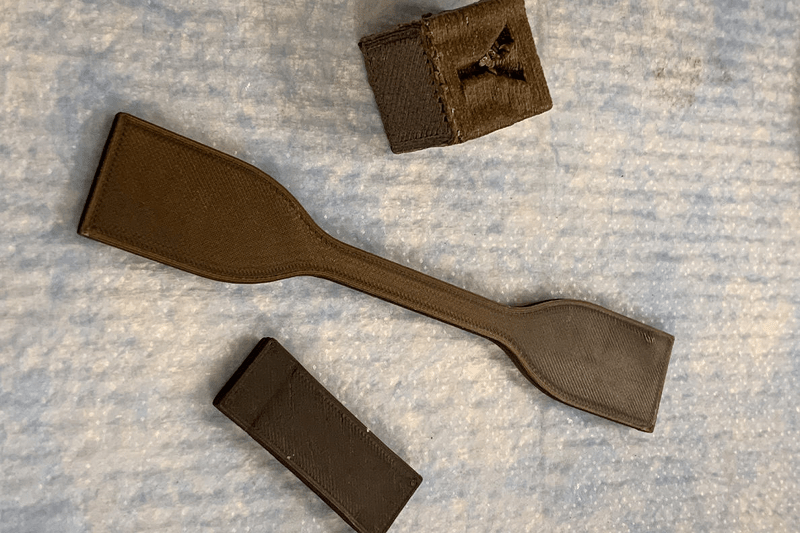While we know some 3D printer operators who need coffee, Washington State University is showing an improved PLA material that incorporates used coffee waste. Regular PLA is not known for being especially strong, though It isn’t uncommon for vendors to add things to their PLA to change its characteristics.
The new material containing about 20% coffee waste showed an over 400% increase in toughness (25.24 MJ/m3) versus standard PLA. Why coffee waste? We aren’t sure. They didn’t add grounds, but rather a dry and odorless material left over after coffee grounds are processed for biodiesel production.
The coffee waste has quite a bit of cellulose in it, which presumably accounts for the additional strength. The actual paper describes how PLA powder and commercially available spent coffee grounds — we don’t know what people usually use them for — formed filament using a Filabot.
Apparently this material is pretty cheap. After all, it is a waste product that occurs after you reuse another waste product. There’s plenty of it, too, since apparently Earthlings drink about 2 billion cups of coffee a day.
There seems to be this odd connection between filament and kitchen items. Seriously.
















Coffee makes everything better!
+10
<3
You have interesting tastes in ketchup, eye drops, keyboards, …
1. ) you can have a coffee stout with garlic fries and dip those fries in ketchup
2. ) caffeinated eye-drops exist. (i assume some are derived from coffee)
3. ) a keyboard made with plastics made similarly to the filament from the article would be cool (maybe make it scratch and sniff too)
Checkmate
This has similar ramifications as corn cellulose.
I’m rather intrigued by the fact this is unique.
Real shame it’s odorless….
Exactly!
Not really, degraded coffee does not smell good.
It has to smell! I want it to smell! Make it smell!
…please
But if it DID smell like (non-degraded) coffee…
It is waste from turning coffee grounds into biodiesel. It’s probably a good thing it is odorless.
Proto Pasta makes Coffee PLA since a few years. https://www.lulzbot.com/support/coffee-pla This has a coffee smell when pinting.
Is the calibration cube from 2005?
Yes, and it is printed terribly….
Very cool! It’ll be interesting to see how biodegradable the composite material is.
But probably not recyclable anymore…
Is anyone recycling PLA at any sort of volume now?
I’m working on redesigning parts of the Recyclebot 5 (found on the reprap wiki) to make it cheaper, easier to assemble, and use more 3d printer components. BOM is around $500 so it’s not insanely out of the realm of possibility to recycle your own waste (including plastic bottles and packing products) if you print a lot.
Would probably be useful to have at a makerspace.
Now to go print my coffee flavored Everlasting-Gobstopper..
Any commercially available filament?
Proto Pasta Coffee PLA https://www.lulzbot.com/support/coffee-pla
I am looking forward to getting tougher PLA!
“Why coffee waste? We aren’t sure.”
Look at a picture of a coffee bean pod, they are very fibrous and tough.
‘Toughness’ sounds good, but the technical definition is how much a material can withstand on impact without shattering. Useful for buffers and stops, but I don’t think many people are seeing limitations with the current materials in this department. Unfortunately, most testing shows that these hybrid PLA’s (PLA with some sort of fiber in them) usually end up weaker in stress and strain.
“The actual paper describes how PLA powder and commercially available spent coffee grounds — we don’t know what people usually use them for — formed filament using a Filabot.”
They usually use spent coffee grounds to grow mushrooms like shiitake! So it would be fun to see if we can still grow these mushrooms after printing.. :-)
There’s someone named Ivan over on Reddit who could use this info to further annoy a corrupt US senator.
3dFuel has been making a Coffee Filament for a few years now
Like Proto Pasta did.
But there are stranger kinds of PLA, like Buzzed Beer Filament also from 3dFuel and others.
Interesting way to use a waste product, definitely good news in my book. If only it had a coffee smell to go with it!